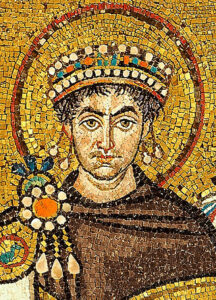• 537 Hagia Sophia, Istanbul
• 716 Wise Tonyukuk Inscription, Orhun Valley
• 1070 Kutadgu Bilig, Kashgar
The Trinity of Sacred Knowledge; They are the Zero Stones of Turkishness.
HOLY INFORMATION LINE built in 500 years; He destroyed the Philosophy of the West.
This line extends from Istanbul via Samarkand/Kaşgar to the easternmost Orkhon Valley.
8000 km. TURKISH Great Wall…
1000 Years of Adventure:
• FiloSofia; 570 BC
• Hagia Sophia; AD 537
The 1000 Year Shimmer of the East:
• Justinian (482-565)
• Kanuni (1494-1566)
• Roman law was established by Justinian in Istanbul.
EASTERN WISDOM
• The meanings of Hagia Sophia and Kutadgu Bilig are the same; Sacred Knowledge
• Justinian and Kanuni have the same meaning; Law Maker
Istanbul represented Justice in both Roman (Justinian) and Ottoman (Kanuni) times; The dictionary meaning of Justinian and the nickname of Sultan Suleiman are the same: LAW.
How can we explain this to the world, which institution should be the spokesperson of this plain truth?
The Magnificent, the just, had built Hagia Sophia and Sulaymaniyah.
MECELLE AND AHMET CEVDET PASHA
Mecelle-i Ahkâm-ı Adliye, or simply Mecelle, is a codex of Islamic private law (civil law) rules compiled by a commission headed by Ahmet Cevdet Pasha between 1868 and 1876. In the last half century of the Ottoman Empire, it was used as a legal basis in shar’i courts. An introduction consists of 16 chapters and contains 1851 articles.
Mecelle is an effort to create an analytical and positive legal system organized in articles, even though it was built on the 13-century Islamic fiqh tradition in its own age. It gives Istanbul a special position as it is the first example after the first (code civil) compilation prepared by the Eastern Roman Emperor Justinian in the 6th century in Constantinople.
The code civil tradition of Western countries is based on the first (code civil) arrangement prepared by Justinian the Great in the 6th century. Mecelle is the most important law of the period opened with the Tanzimat Edict and one of the most important monuments of Ottoman modernization. In this sense, it also shows that the direction called (modernization) was actually the revival of a process that had its roots in Constantinople, that is, in Istanbul.
Mecelle, which means “a very large book” in Arabic, is used as a translation of the word “codex”, which means “1) a large book, 2) a compilation of legal principles”.
About Mecelle, Ahmed Cevdet Pasha, who had a great effort in its preparation, makes the following comments:
“The most preeminently compiled law on the European continent is the Roman law, which was organized and codified by a community of ilmiyye in the city of Constantinople (Istanbul). It is the basis of the European code of laws and is famous and respected everywhere. But it is not like Mecelle-i Ahkam-i Adliyye. There are many differences (between) in their brains. Because it was made by the grace of five or six law-givers. This, on the other hand, has been adopted (taken) from the sharia-i garra, which is divinely appointed (by Allah) by the help of five or six jurists.
A person from the European legal professions, who this time compared Mecelle with the Roman law and looked at both of them with the eye of a human work (only a human work) said:
‘Law was made twice in the world through the community of ilmiyye. Both happened in Istanbul. Secondly, due to its arrangement and regularity, and the good manners and connection (good arrangement) of the message (of the matters in it), it is very admirable and superior to the former (superior and preferable). Even the difference in their brains is a measure (measurement) of how many steps a person has taken in the civilization of the world from that century to this century.”

























